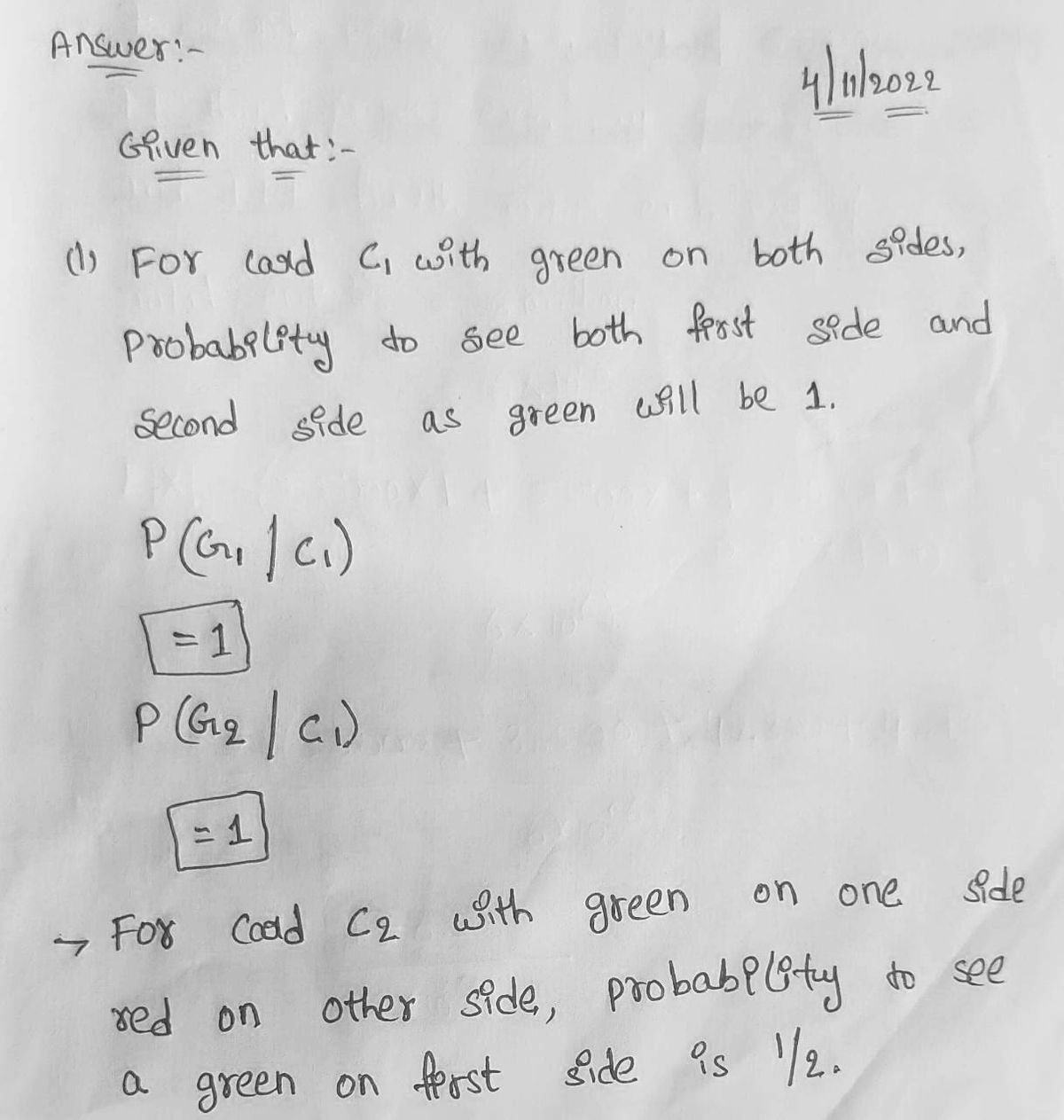Problem 5 You have three cards. The first card is green on both sides; the second is red on both sides; and the third is green on one side and red on the other. Choose a card at random (all outcomes should be equally likely!) and randomly choose which side of this card you see first (again with equally likely outcomes), then turn the card to see the other side. (1) Define events C₁ = "you choose the ith card" G₁ = "the first side is green" G₂ = "the second side is green". (i = 1,2,3) Which values should the probabilities P(G; | C;) for j = 1,2 and i = 1,2,3 have in order to describe the experiment adequately? (2) Based on your answer in (1), compute the conditional probability that the second side of the randomly chosen card is green, given that the first side was green, i.e. P(G₂|G₁).
Problem 5 You have three cards. The first card is green on both sides; the second is red on both sides; and the third is green on one side and red on the other. Choose a card at random (all outcomes should be equally likely!) and randomly choose which side of this card you see first (again with equally likely outcomes), then turn the card to see the other side. (1) Define events C₁ = "you choose the ith card" G₁ = "the first side is green" G₂ = "the second side is green". (i = 1,2,3) Which values should the probabilities P(G; | C;) for j = 1,2 and i = 1,2,3 have in order to describe the experiment adequately? (2) Based on your answer in (1), compute the conditional probability that the second side of the randomly chosen card is green, given that the first side was green, i.e. P(G₂|G₁).
A First Course in Probability (10th Edition)
10th Edition
ISBN:9780134753119
Author:Sheldon Ross
Publisher:Sheldon Ross
Chapter1: Combinatorial Analysis
Section: Chapter Questions
Problem 1.1P: a. How many different 7-place license plates are possible if the first 2 places are for letters and...
Related questions
Question
Please write a full formal mathematical definition for the

Transcribed Image Text:Problem 5
You have three cards. The first card is green on both sides; the
second is red on both sides; and the third is green on one side and red on the other. Choose a card
at random (all outcomes should be equally likely!) and randomly choose which side of this card
you see first (again with equally likely outcomes), then turn the card to see the other side.
(1) Define events
C₁ = "you choose the ith card"
G₁ = "the first side is green"
G₂ = "the second side is green".
(i = 1,2,3)
Which values should the probabilities P(G; | C;) for j = 1,2 and i = 1,2,3 have in order to describe
the experiment adequately?
(2) Based on your answer in (1), compute the conditional probability that the second side of the
randomly chosen card is green, given that the first side was green, i.e. P(G₂|G₁).
Expert Solution
Step 1

Step by step
Solved in 4 steps with 4 images

Recommended textbooks for you

A First Course in Probability (10th Edition)
Probability
ISBN:
9780134753119
Author:
Sheldon Ross
Publisher:
PEARSON


A First Course in Probability (10th Edition)
Probability
ISBN:
9780134753119
Author:
Sheldon Ross
Publisher:
PEARSON
